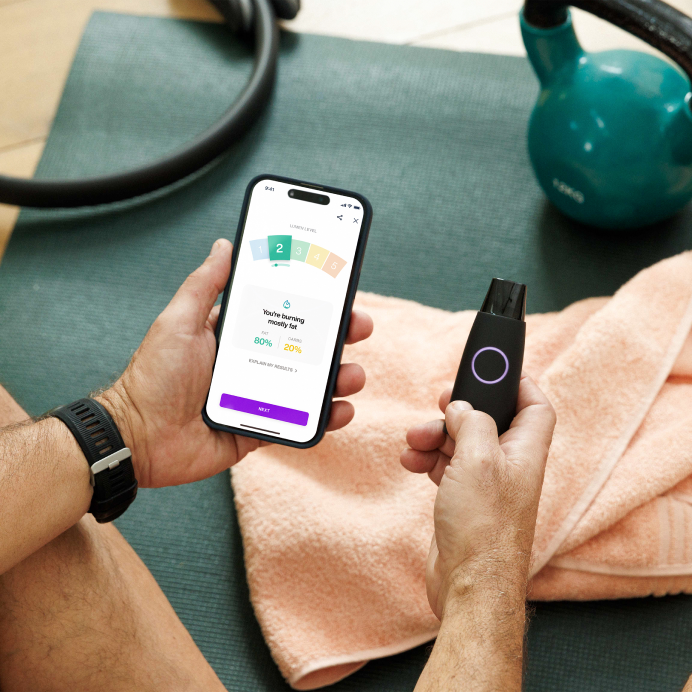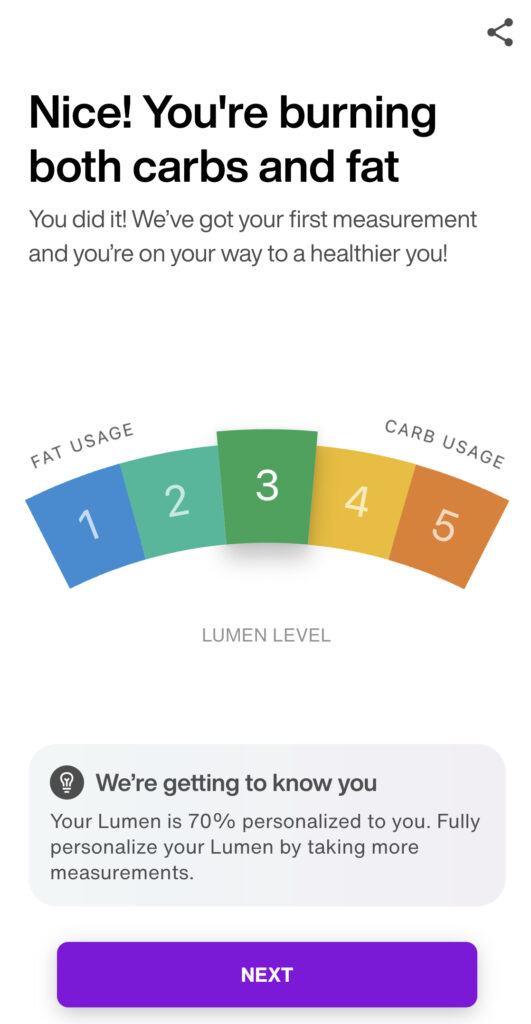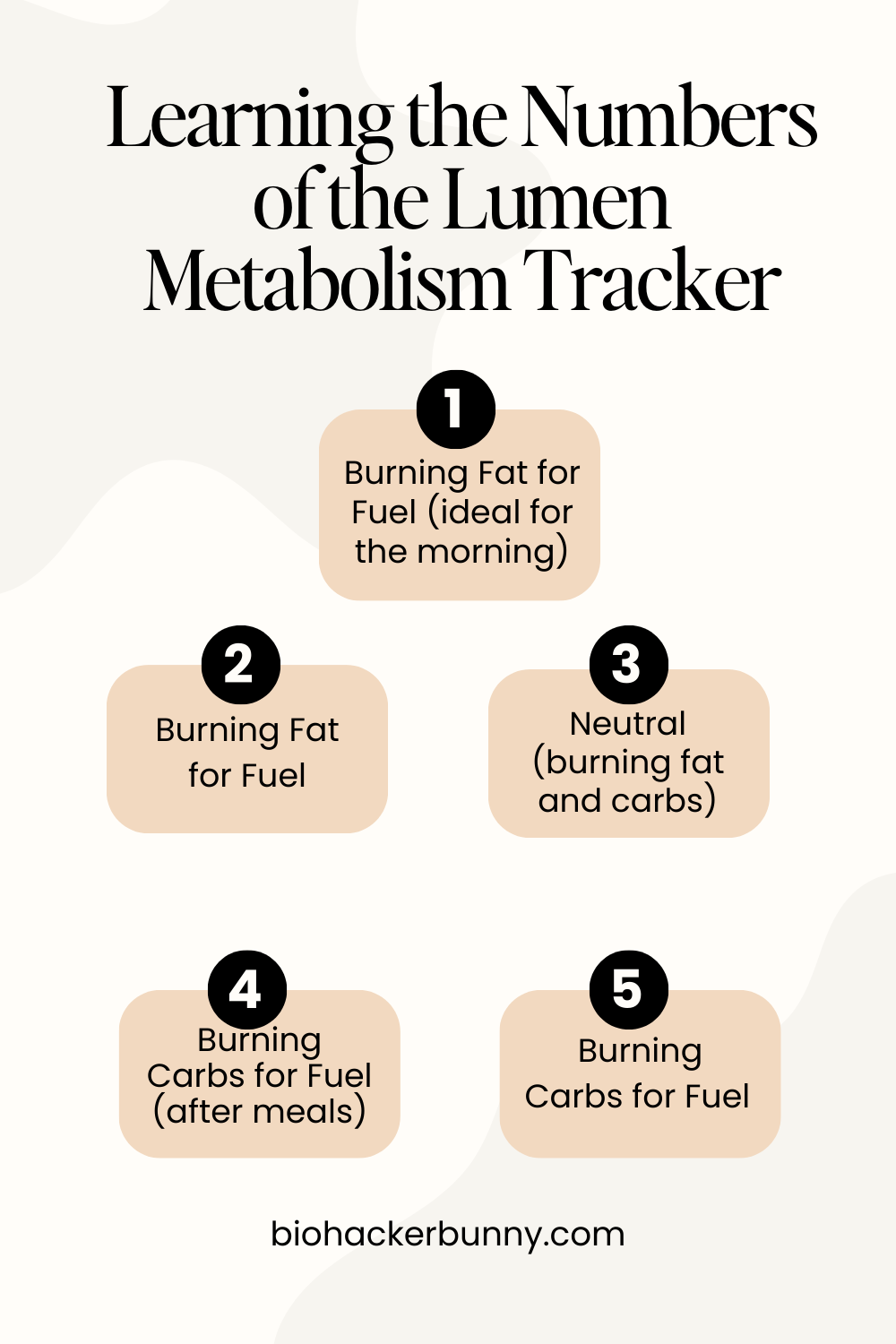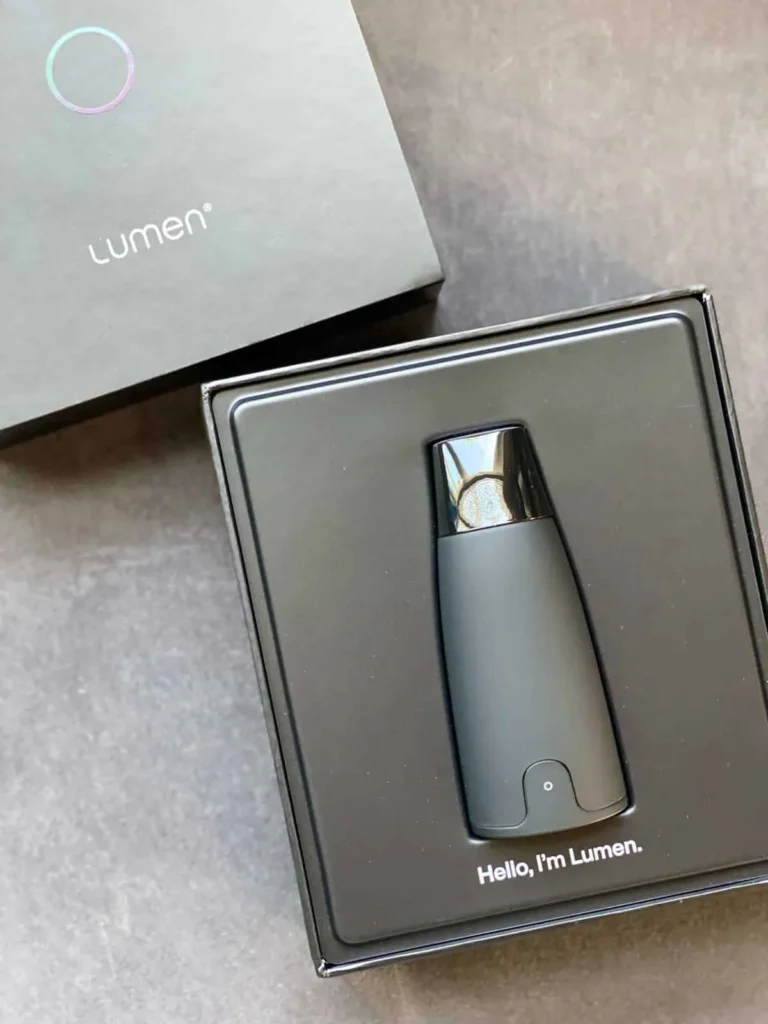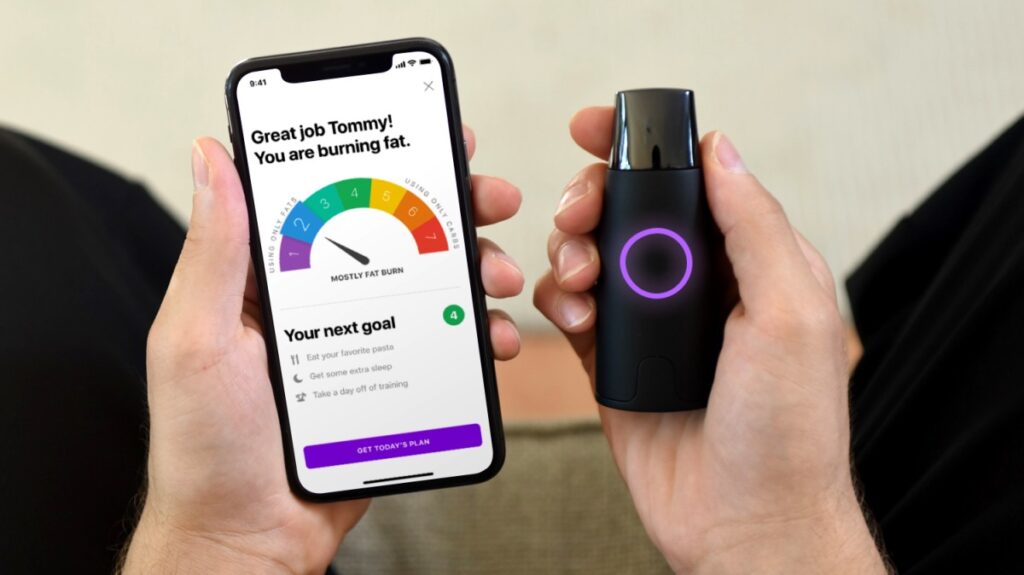I spent $350 on a device that promised to “hack my metabolism” by analyzing my breath. Here’s what actually happened… 💨
Look, I’m that girl who tests every wellness gadget that promises to revolutionize my health routine. From continuous glucose monitors to fancy sleep trackers, I’ve probably dropped more money on biohacking devices than I care to admit. So when Lumen started popping up everywhere with claims that it could optimize my metabolism through breath analysis, I was both intrigued and skeptical.
The promise was compelling: blow into this sleek device each morning, get real-time insights about whether your body is burning fat or carbs, and use that data to optimize your meals, workouts, and weight loss efforts. After four months of daily testing, here’s my brutally honest Lumen metabolism tracker review—including the good, the frustrating, and whether it’s actually worth your hard-earned money.
Spoiler alert: the answer is more nuanced than I expected.
The Science Behind the Hype (Simplified)
Before we dive into my experience, let’s talk about what Lumen actually claims to do. The device measures the concentration of CO2 in your breath to determine your respiratory exchange ratio (RER), which indicates whether your body is primarily burning fat or carbohydrates for fuel at that moment.
This concept of “metabolic flexibility”—your body’s ability to efficiently switch between burning fat and carbs—is legitimate science. When you’re metabolically flexible, you can tap into fat stores for energy more easily, maintain stable blood sugar, and theoretically optimize your weight management and energy levels.
Lumen’s marketing promises include personalized nutrition recommendations, optimal meal timing insights, workout guidance based on your current metabolic state, and overall metabolic health improvement. The big question is whether a $350 consumer device can actually deliver on these clinical-level insights.
What I Hoped This $350 Device Would Do for Me
Going into this test, I had specific goals. I’d been stuck in a frustrating weight loss plateau for months, my energy levels were inconsistent (hello, 3 PM crashes), and I wanted to optimize my workout timing to maximize fat burning. I was also curious about whether I could use metabolic data to break through my plateau without drastically changing my diet.
My testing commitment was serious: daily morning measurements for four months, post-workout readings when possible, detailed meal and exercise tracking, and comparison with my other biohacking tools (Oura Ring, continuous glucose monitor, and regular DEXA scans).
I went in with realistic expectations—I didn’t expect miracle weight loss, but I did hope for actionable insights that would help me understand my body’s patterns better.
Month 1: Figuring Out What Those Numbers Actually Mean
The first month was honestly confusing. Lumen gives you a “Flex Score” out of 21, with higher scores indicating better metabolic flexibility. Mine started at a mediocre 6.1, which apparently meant my body wasn’t great at switching between fuel sources.
Each morning, I’d blow into the device (which feels like slowly inflating a balloon), wait for the reading, and get a number from 1-5. Lower numbers meant I was burning fat, higher numbers meant carbs. Sounds simple, right? Wrong.
The daily variations seemed random at first. One day I’d get a 2 (fat burning), the next day a 4 (carb burning), with no obvious correlation to what I’d eaten or how I’d slept. The app would give me recommendations like “eat more protein today” or “consider a low-carb meal,” but I couldn’t tell if following these suggestions was actually making a difference.
What I did notice: the device was incredibly consistent in its readings. If I took multiple measurements in the same morning, I’d get the same number every time, which was reassuring for accuracy.
Months 2-3: When the Data Started Making Sense
This is when things got interesting. Around week 6, patterns started emerging that actually made sense. I noticed that my worst readings (high carb burning when I wanted to be in fat-burning mode) consistently happened after poor sleep or high-stress days—data that aligned perfectly with my Oura Ring readings.
My Flex Score gradually improved to 8.2 by month 3, and I started seeing correlations between my Lumen readings and my energy levels. On days when I woke up with a fat-burning reading (1-2), I felt more stable energy throughout the day and had better workouts.
Here’s where Lumen for weight loss gets interesting: I lost 8 pounds during months 2-3, which broke my plateau. Was it entirely due to Lumen? Probably not. But the device helped me identify that my body responded better to workouts when I was already in a fat-burning state, and I started timing my exercise accordingly.
The meal timing recommendations also started making more sense. When Lumen suggested higher-carb meals, I was usually coming off intense workouts or showed signs of being in a deeper fat-burning state. When it recommended lower-carb options, I was typically in a higher carb-burning mode and needed to shift my metabolism.
The real breakthrough moment came in month 3 when I realized I could predict my Lumen reading based on how I felt. That correlation between the device data and my actual energy levels convinced me that it was measuring something real and useful.
Month 4: What Happened When the Novelty Wore Off
By month 4, the daily measuring started feeling like a chore. The initial excitement of getting new data wore off, and I found myself occasionally skipping days. This is probably the biggest limitation of any tracking device—sustainability.
However, the habits I’d developed based on Lumen’s insights stuck around. I continued timing my workouts for when I was more likely to be in fat-burning mode, and I maintained the meal timing strategies that had worked well. My weight loss stalled a bit (typical for month 4 of any new routine), but I maintained the 8 pounds I’d lost.
When I compared Lumen’s insights to my other tracking tools, there was impressive consistency. Days when Lumen showed poor metabolic flexibility often correlated with low heart rate variability on my Oura Ring and higher glucose spikes on my continuous glucose monitor.
Let’s Talk About Whether Lumen’s Data Is Legit
So, is Lumen accurate? The short answer is: more accurate than I expected, but with important limitations.
The device has been validated against laboratory-grade metabolic carts in clinical studies, and the results show good correlation for determining metabolic fuel usage. In my experience, the readings were internally consistent and aligned with other metabolic indicators I was tracking.
However, Lumen can only tell you about your current metabolic state—it’s a snapshot, not a comprehensive metabolic analysis. It doesn’t account for factors like thyroid function, insulin sensitivity, or metabolic damage from chronic dieting. It’s also influenced by factors like alcohol consumption, certain medications, and even how you breathe into the device.
I tested the consistency by taking multiple readings at the same time on several occasions. The device was remarkably consistent, usually giving me identical readings within a few minutes of each other. When I compared my Lumen data to professional RMR testing I had done, the patterns aligned well, though the absolute numbers weren’t identical.
The Real Talk: Is This Worth Your $350?
Okay, so you came here for the real Lumen Metabolism Tracker review. Here’s who should consider Lumen:
Perfect for data-driven personalities who love tracking and see patterns in numbers. If you’re already using multiple health tracking tools and want to add metabolic insights to your toolkit, Lumen provides unique data that other devices don’t offer.
Plateau-breakers who need fresh insights for weight loss or fitness goals. If you’ve been stuck and need a new angle for optimization, Lumen can provide actionable information about meal timing and workout scheduling.
Serious biohacking enthusiasts building a comprehensive wellness toolkit. Lumen integrates well with other devices and adds a metabolic layer to your health data.
Skip if: You’re budget-conscious and just starting your wellness journey—there are more cost-effective ways to improve your metabolism. You’re inconsistent with tracking—Lumen requires daily commitment to provide valuable insights. You’re looking for a quick fix—this is about gradual optimization over months, not immediate results. Consider a standalone app to get the hang of tracking first. Read about our favorites here. Or, start with a wearable device like these.
Other Ways to Track Your Metabolism (That Cost Less)
Before dropping $350 on Lumen, consider these alternatives: continuous glucose monitors can provide metabolic insights for a fraction of the cost, basic heart rate variability tracking can indicate metabolic stress, and simple dietary experiments (like testing your response to different meal timing) can be surprisingly effective.
Professional RMR testing costs around $100-150 and gives you comprehensive baseline data, while regular DEXA scans track body composition changes that reflect metabolic improvements.
My Final Take: Hype or Helper?
After four months of testing, I’d rate Lumen a 7.5/10. It delivers on its core promise of providing metabolic insights, the data is accurate enough to be actionable, and it helped me break through a frustrating plateau. However, the high price point and daily commitment requirement make it a luxury rather than a necessity.
The device works best as part of a comprehensive biohacking approach rather than a standalone solution. If you’re already investing in your health with multiple tracking tools and have the budget for another device, Lumen adds valuable metabolic data that other tools don’t provide.
Would I recommend it? Yes, but with caveats. If you’re serious about optimization, have realistic expectations, and can commit to consistent daily use, Lumen provides unique insights that can genuinely improve your metabolic health and weight management strategies.
For most people, I’d suggest starting with less expensive metabolic optimization strategies and considering Lumen as a next-level tool once you’ve mastered the basics.
DISCLAIMER: Some links on this site are affiliate links, which means we might earn a small commission if you shop through them (no extra cost to you—think of it as buying us a matcha 🍵 for the research).
While some of us are doctors, we’re not your doctors. The info on this site is meant to educate and empower, not diagnose or treat. Always chat with your own healthcare provider before starting new meds, peptides, supplements, or that intense cold plunge-fasting-stack we’re raving about. You do you—but do it safely. 💪



